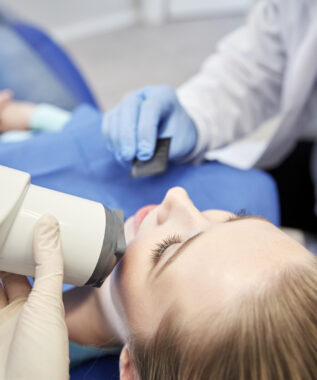 It’s difficult to predict if and when you might develop a concern with your oral health. That’s one reason why it’s important to stick to a regular schedule of preventive visits with your dentist. During each visit, your dentist can thoroughly examine your teeth, gums, and oral tissues to determine if a problem exists, and what treatment option can help you stop it from progressing. This can also help you more successfully control your risks of tooth loss, many of which stem from the development of common concerns like tooth decay and gum disease.
It’s difficult to predict if and when you might develop a concern with your oral health. That’s one reason why it’s important to stick to a regular schedule of preventive visits with your dentist. During each visit, your dentist can thoroughly examine your teeth, gums, and oral tissues to determine if a problem exists, and what treatment option can help you stop it from progressing. This can also help you more successfully control your risks of tooth loss, many of which stem from the development of common concerns like tooth decay and gum disease.
When your tooth has been hurting for a while
A toothache can be a sign of a few different oral health concerns, but it usually means that your tooth structure has become compromised or threatened in some way. For example, a mild case of tooth sensitivity might mean that the enamel surrounding and protecting the tooth has grown weak, which could be a precursor to the development of tooth decay. Or, it may mean that the unprotected root of the tooth has become exposed due to the gum tissues around it receding. In many cases, this can indicate or lead to the formation of gingivitis, which is the beginning stage of gum disease.
When you start to notice signs of gingivitis
Gingivitis, or early gum disease, develops when oral bacteria infect your gum tissues. At first, the symptoms of this infection may not seem significant, if they’re noticeable. However, you may notice that your gums are becoming slightly inflamed, or are changing color in certain areas. The recession of the gums from your teeth can be another indication of gum disease, and it can become more noticeable as it progresses and erodes more of your gum tissues. Spotting and treating gum disease is early is important to mitigating your tooth loss risks, as it’s the leading cause for adults to experience tooth loss or need tooth extraction.
When you have a tooth restoration fail
After treating a tooth that becomes damaged or decayed, the threat of losing the tooth will be lower, but it doesn’t guarantee that you’ll retain the tooth’s healthy, natural structure long-term. If the restoration fails, for instance, then the tooth structure underneath it will once again be vulnerable to being damaged further. In severe cases, this could lead to the tooth’s loss by the time you seek treatment for it, or the tooth may need to be extracted if it isn’t lost on its own.
Learn more about your tooth loss risks
Tooth loss can occur for many different reasons, and if you may be able to control your risk of it by addressing the underlying causes of it promptly. To learn more, schedule an appointment with us by calling Dreem Dentistry in Leawood, KS, today at 913-681-5500. We also serve patients who live in Overland Park and all surrounding communities.





